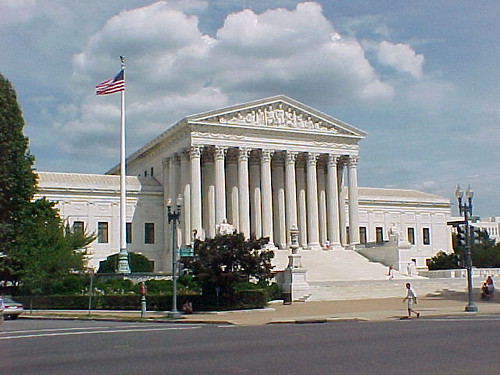Key Takeaways
• Supreme Court Justice Barrett called the 22nd Amendment “cut and dry.”
• Her view came as former President Trump mused about a third term.
• Commentators heatedly debated her answer on social media.
• The exchange sparks fresh questions about term limits.
Exploring the 22nd Amendment
The 22nd Amendment limits presidents to two terms. It came after Franklin D. Roosevelt won four times. Since then, no president has served more than eight years. Amy Coney Barrett insisted the rule is clear. Yet her words prompted many to think again.
What the 22nd Amendment Says
The text of the 22nd Amendment states that no person can be elected president more than twice. It also bars anyone who has held the office for over two years of a term won by another. In simple terms, this means:
• A president can serve two full terms.
• If someone takes over for more than two years of another’s term, they count that time as one.
• Thus, the maximum years any individual can serve is ten.
During her TV interview, Barrett said, “That’s what the amendment says. After FDR has four terms, that’s what the amendment says.” Her reply seemed straightforward. Yet some experts wonder if the amendment covers every scenario.
Why Barrett’s Comments Matter
Barrett spoke just as former President Trump floated a third run. He has asked why the limit can’t be changed. In recent speeches, he suggested creative workarounds. Any plan to bypass the 22nd Amendment could land in the Supreme Court. Barrett’s view hints at how justices might rule.
Moreover, Barrett is one of six conservative justices on the court. Her tone carries weight. When a justice uses plain language, people take notice. Therefore, her use of “cut and dry” felt decisive. Yet the debate shows that legal clarity doesn’t always end questions.
Reactions and Debate
Soon after the interview, reaction poured in on social media. Some users praised Barrett’s take. Others slammed the question itself. Writer Jordan Zakarin called the topic “a travesty.” He felt no justice should face such a query on live TV.
Veterans for Responsible Leadership backed Barrett. They said anyone challenging the amendment is “an enemy of the Constitution.” In contrast, Michael Colbruno noted a loophole theory. He speculated Trump could run as vice president, then swap roles. That, Colbruno argued, might dodge the two-term rule.
CNN’s Aaron Blake urged calm. He wrote that people should not “read too much into this” from either side. Blake reminded readers that the amendment’s language seems plain. Yet history shows legal text can invite many interpretations.
Legacy of FDR and the 22nd Amendment
The 22nd Amendment arose after Roosevelt’s four terms. Roosevelt steered the nation through the Great Depression and World War II. Many voters approved his extra years in office. However, critics warned that long presidencies risked too much power in one person.
In response, Congress passed the amendment in 1947. States swiftly ratified it by 1951. No president has tried to ignore it since. Still, the amendment has its critics. Some argue it limits voter choice. Others say it protects democracy by preventing a president from clinging to power.
Possible Scenarios Beyond Two Terms
Even with clear language, some wonder about odd scenarios. For example, what if a vice president serves just under two years? Could they then run twice more? The amendment seems to allow that. Thus, a person might serve almost ten years.
Another theory imagines a president swapping seats with the vice president. If the vice president takes office for a day, could the former president return? Most legal experts doubt such a scheme would work. Courts often block attempts that clearly ignore the amendment’s spirit. Yet no test case has fully resolved these hypotheticals.
The Role of the Supreme Court
If a third-term bid ever reached the Supreme Court, justices would weigh the amendment’s text, history, and purpose. Barrett’s answer suggests she sees no gray area. But other justices might view the amendment differently.
Decisions often hinge on intent. Did lawmakers intend to close every loophole? Or merely curb multi-term presidencies? Past rulings show the Court values both the plain meaning and the founding context. Therefore, any challenge would spark deep legal debate.
What This Means for the Future
Barrett’s “cut and dry” line may calm some concerns. Yet the lively reactions prove doubts linger. Presidential term limits remain a charged topic. As former presidents hint at third runs, our democracy faces new tests.
In the end, voters and lawmakers hold real power. They can propose constitutional changes or legislate clarifications. Meanwhile, the Supreme Court stands ready to interpret the 22nd Amendment if needed. Barrett’s stance gives a hint of one justice’s view. However, the full court might see it another way.
Ultimately, clear language and strong civic engagement protect our system. The 22nd Amendment serves as a guardrail. Yet citizens must stay informed. They must debate, vote, and speak up. That way, term limits remain “cut and dry” in practice, not just on paper.
Frequently Asked Questions
How does the 22nd Amendment limit a third term?
The amendment says no one can be elected president more than twice. It also bars someone who has served over two years of another term from being elected more than once.
Could a president bypass the 22nd Amendment?
Some theories suggest workarounds, like swapping with the vice president. But most experts believe courts would block clear attempts to ignore the amendment’s intent.
Why did Justice Barrett call the rule “cut and dry”?
Barrett referred to the amendment’s plain text. She stressed that after four terms by Franklin D. Roosevelt, the rule now limits future presidents to two terms.
What would happen if someone challenged the 22nd Amendment?
The Supreme Court would likely weigh the amendment’s wording, history, and purpose. Justices would decide based on both legal text and the founders’ intent.

